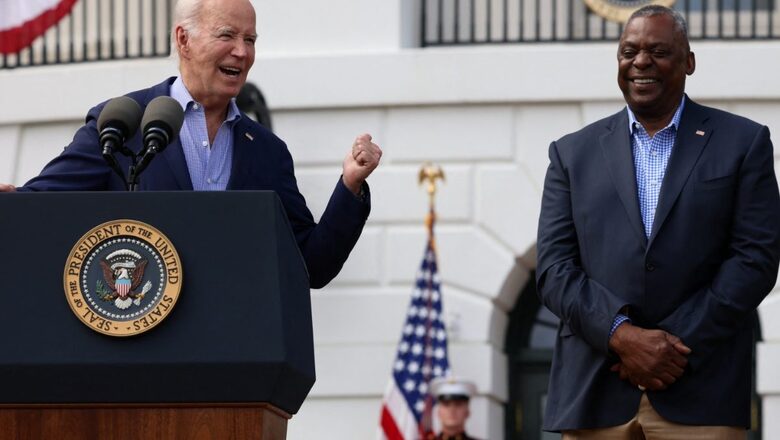
views
Defense Secretary Lloyd Austin returned to work at the Pentagon on Monday after nearly a month’s absence because of prostate cancer and met with NATO Secretary General Jens Stoltenberg.
“At this important time, I’m glad to be back at the Pentagon,” said Austin, speaking at the start of the meeting. “I feel good and am recovering well, but still recovering, and I appreciate all the good wishes that I have received thus far.”
After that session, Austin went to the White House Situation Room for a meeting of the national security team to discuss the drone attack at a base in Jordan that killed three U.S. troops and wounded several dozen others.
He was last in the Pentagon on Dec. 21. He had been diagnosed with prostate cancer earlier in December, and he went to a hospital for a surgical procedure for the cancer on Dec. 22. He worked the following week from home.
On Jan. 1, he was taken by ambulance to Walter Reed National Military Medical Center after experiencing extreme pain and was admitted to the intensive care unit. He stayed there for two weeks but didn’t inform the White House or his deputy that he had cancer, had surgery or had been taken back to the hospital and put in intensive care until days later. He told President Joe Biden and other key leaders about his diagnosis only after he’d been in the hospital more than a week.
Austin’s lack of disclosure has prompted changes in federal guidelines and has triggered an internal Pentagon review and an inspector general review into his department’s notification procedures. Both reviews are ongoing.
Austin has been working from home since he got out of the hospital on Jan. 15, and he made his first public appearance early last week during a virtual Ukraine contact defence group meeting. He gave opening remarks for the meeting via video camera that was streamed online.
Doctors at Walter Reed said on Friday that Austin’s prostate cancer prognosis is excellent and no further treatments will be needed. He saw doctors for a checkup on Friday.
Austin has been criticized for keeping secret his prostate cancer diagnosis, surgery and subsequent hospitalization with complications from the procedure.
He was diagnosed in early December and had what the Pentagon described as a “minimally invasive surgical procedure,” called a prostatectomy, to treat the cancer on Dec. 22. He was under general anesthesia during this procedure and had transferred some authorities to his deputy defense secretary, Kathleen Hicks. He was discharged the next day and continued to perform his duties.



















Comments
0 comment